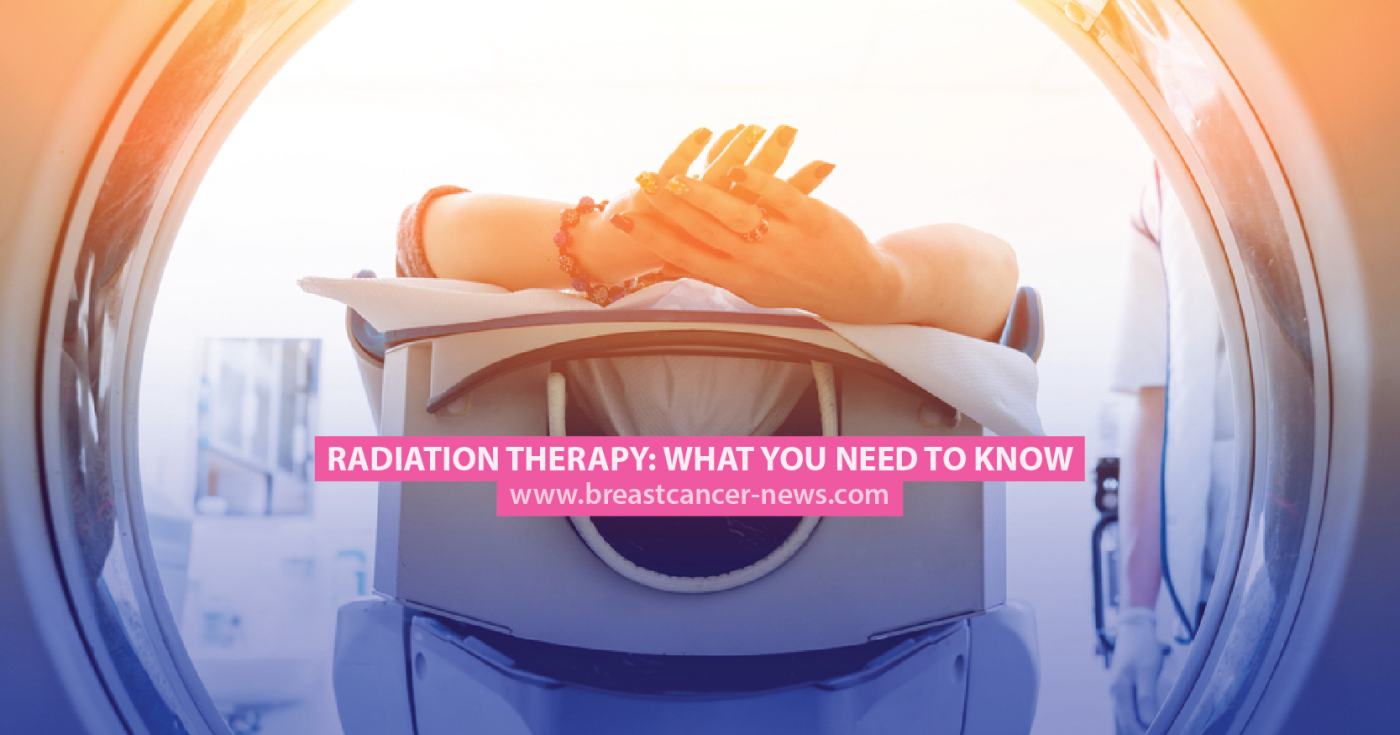Compared with chemotherapy and surgery, some breast cancer patients believe that radiation is the easiest part of cancer treatment. According to the Mayo Clinic, more than half of all cancer patients receive radiation therapy as part of their regimen. It can be used before, after, or in combination with other cancer treatment methods.
Radiation typically refers to the use of external beams of intense energy to kill cancer cells. Most breast cancer patients using this type of therapy can expect to have an appointment five days a week for three to seven weeks. The appointments don’t take very long &mdash usually only about 10 to 30 minutes.
Before your treatment begins, your radiologist may have to identify particular spots on your body. In that case, they’ll make temporary marks or even give you small tattoos – about the size of a pin prick – that will help technicians ensure that they are targeting exactly the right spots.
Because it’s so important that your body stays perfectly still while your sessions are underway, your team will work with you to find a position that will keep you comfortable and situated appropriately for optimum results. They might make a mold for your body, or they might use cushions or restraints to hold you in place.
MORE: Three tips for going back to work after breast cancer
Breast cancer patients, for example, might need to lie on a table with arms stretched over their heads. If that happens, you technicians might place your hands in a device that looks like a stirrup to help you stay still during the session.
When it’s time to get started, you’ll lie on a table while a massive machine beams radiation to targeted spots on your body. The machine might rotate so it can reach those targets from different angles. While it moves, you’ll probably see flickering lights and hear noises.
You’ll be alone in the room, but radiation therapists monitor the process, and they can see and hear you the whole time. Occasionally, they’ll give you directions which you’ll hear over a speaker. For example, they might ask you to hold your breath for a few seconds, or they might ask you a question. You can talk back to them, and they’ll hear you.
Radiation is a surreal experience, but it’s not painful. And each session is usually short and puts you one step closer to the other side of your cancer experience.
MORE: Three easy recipes using cancer-fighting vegetables
Breast Cancer News is strictly a news and information website about the disease. It does not provide medical advice, diagnosis or treatment. This content is not intended to be a substitute for professional medical advice, diagnosis, or treatment. Always seek the advice of your physician or another qualified health provider with any questions you may have regarding a medical condition. Never disregard professional medical advice or delay in seeking it because of something you have read on this website.

